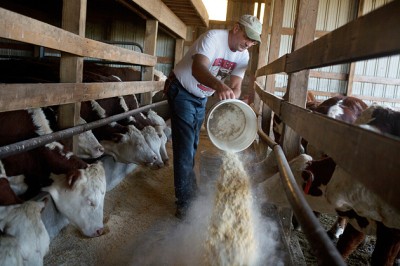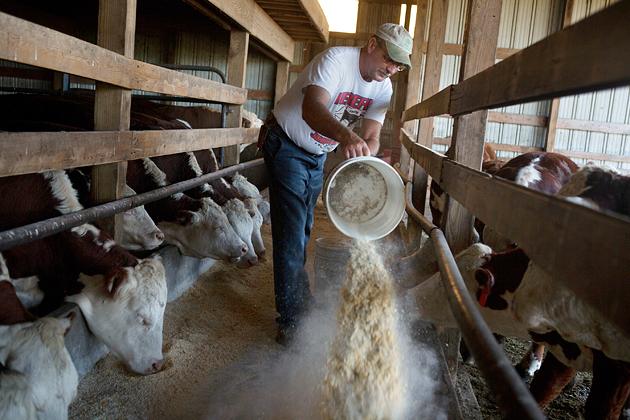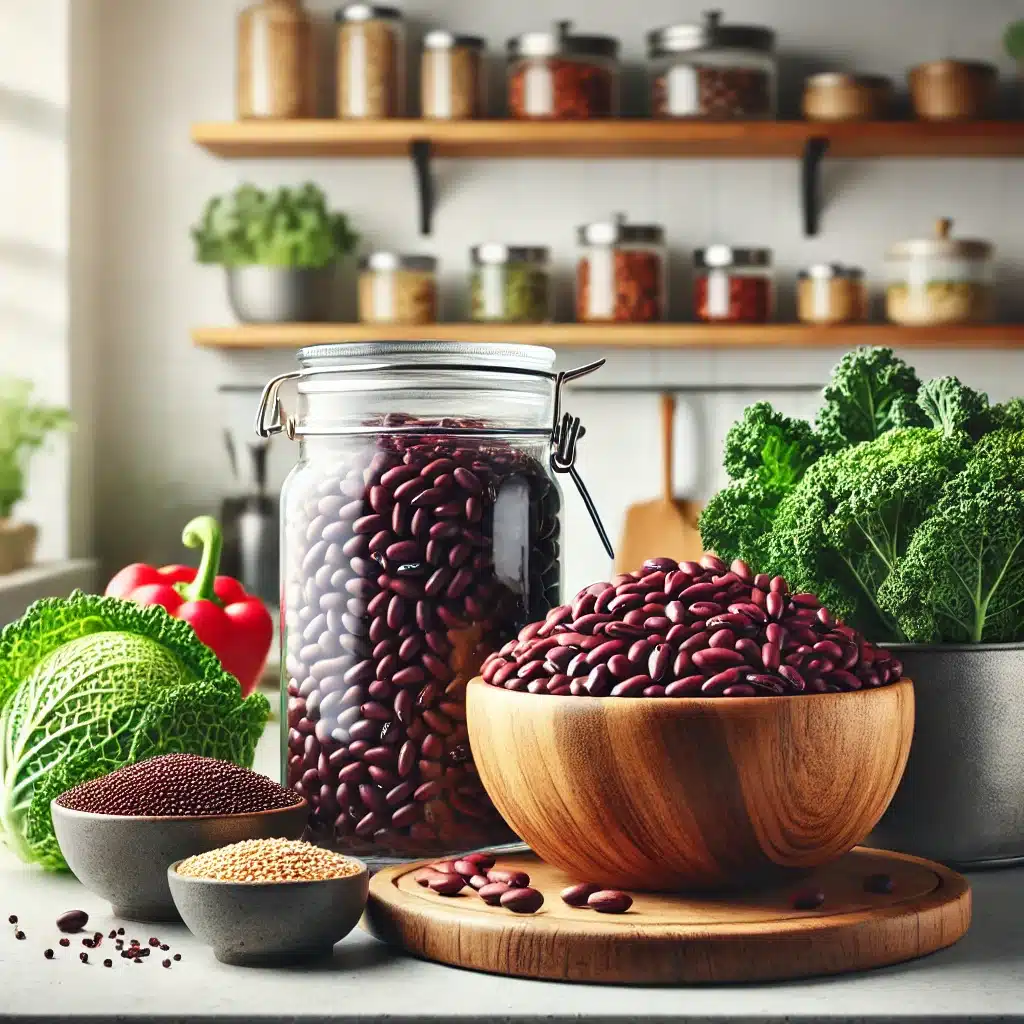
“Let food be your medicine and medicine be your food,” said Hippocrates. But aren’t we interpreting it the wrong way when we put antibiotics in the animals we rear for food? But that’s exactly what we have been doing for more than six decades now. And for all the wrong reasons, too!
In the meat-producing industries, large quantities of antibiotics are being used – but not for treating animal illnesses. They are mixed with the feed of perfectly healthy cattle and pigs and other animals grown for meat.
Antibiotics for health or for profit?
Why do these animals need antibiotics if they are not ill? Who prescribes them? The answer is: The animals do not need them. And veterinarians don’t prescribe them, either. It is the meat-producing companies, with their eyes on profit, who decide this.
It all started way back in the 1950s when it was observed that antibiotics somehow increased the growth rate of animals. They grew faster and bigger on less feed when it was mixed with low doses of antibiotics, probably because it prevented gut flora from taking a cut from their food. Anyway, it seemed like a great idea to reduce costs and increase efficiency. They even got the approval of the FDA for this non-therapeutic use of antibiotics.
First signs of danger
Within 20 years of using antibiotics in the feed, concerns about its safety surfaced. Researchers began to notice a relationship between this widespread use of antibiotics in animals and the rising antibiotic resistance in many bacteria-causing diseases in humans. A study by Prof. Stuart Levy in 1976 showed how antibiotic resistant E. coli passed from the animals into farmhands. This led to FDA deciding in 1977 to ban penicillin and tetracycline use in animals reared for meat. But that didn’t change much in the meat industry. Even now antibiotics are given to animals to boost their growth. They are convinced that it is the only cost-effective way to feed a meat-hungry population.
How does antibiotic use in animals affect us? When 80 percent of antibiotics used in the US go into animals reared for food, it can affect our health in different ways, both directly and indirectly. Such as:
1. Antibiotic residues in food products.
When drugs are used therapeutically to fight specific diseases in animals, there’s a “drug withdrawal period” during which their meat, milk or eggs are not to be harvested for marketing. Whether this is strictly followed in the industry is open to question. Whether it is even applicable to the sub-therapeutic doses given as growth enhancers is anybody’s guess.
According to a former director of the FDA, David Aaron Kessler, the resistance of the food industries to change even extends to collection of data.
2. Environmental contamination with antibiotics.
Antibiotics excreted by the animals, as well as those in the wasted feed, find their way to large dump yards and eventually back into us through water and compost used in growing crops. In China, where antibiotic production and use in food industry is the highest, they check the water in the vicinity of industrial farms to measure the antibiotic content. This low dose antibiotic intake could have negative impact on our health. If it could fatten up animals, couldn’t it do the same to us too? Is it contributing to the rising obesity epidemic?
3. Emergence of antibiotic-resistant microorganisms.
This is the gravest concern that has prompted FDA to revisit the problem of antimicrobials used for growth enhancement. The regular low dose usage leads to the emergence of new strains of microbes that are resistant to these drugs. While it is a health concern for the animals themselves, its implication on people’s health is the main issue here. Many bacteria such as E. coli found in animal products can infect us and make us seriously ill. If they are drug-resistant strains, we are left with very few treatment options.
Story continues below video
It is an alarming situation that has prompted the World Health Organization (WHO) to advice all countries to “terminate or rapidly phase out antimicrobials for growth promotion if they are used for human treatment.” According to an estimate released by Centers for Disease Control and Prevention the toll is as high as 23,000 deaths a year from infections by antibiotic-resistant microbes. FDA has taken note of this, and its latest attempt to phase out this practice enlists the help of drug manufacturers.
Meat industry responds
Most people in the meat industry are understandably disturbed by the FDA’s initiative. Many, like Richard Lobb, spokesman of National Chicken Council, are not convinced that banning non-therapeutic use of antibiotics will have the desired effect. They argue that, while there’s no doubt that drug resistant microbes are increasing, there’s no evidence to link it to antibiotic use for growth enhancement in animals.
As a matter of fact, antibiotic overuse in people also contributes to drug resistance in germs as evidenced by hospital acquired infections of MRSA (Methicillin-resistant Staphylococcus aureus). But therapeutic use is inevitable, whether it is in animals or in humans, while non-therapeutic use is not.
Since 80 percent of antibiotics use in the US is in agribusiness, curbing unnecessary use will go a long way in slowing down the menace, if not completely stopping it. And there are a few instances when the link between industry use and human infections was quite clear, as when the fluoroquinolone-resistant bacteria in meat infected people.
Fluoroquinolones in the meat industry
Fluoroquinolones are a group of powerful antibiotics used to treat serious food-related infections such as Salmonellosis and Campylobacteriosis in people. Cipro and Baytril are two drugs of this group widely used in meat industry. In 2002, the New England Journal of Medicine published a study of an outbreak of fluoroquinolone-resistant Salmonella infection in people acquired from Cipro-resistant Salmonella in pork.
Story continues below video
)
Before FDA’s approval of the use of Baytril in poultry, fluoroquinolone-resistant campylobacter infection was rare, but after it approved it in 1995, more than 11,000 people developed a severe form of the disease resistant to fluoroquinolones.
Drug companies and drug labeling
The long-awaited action from the FDA consists of asking drug companies to change the labeling of drugs important for medical use in people. Once the label is changed, it will become illegal to use them for non-therapeutic purposes. The drugs would require a veterinarian’s prescription. Two major drug manufacturers have agreed, but there’s no guarantee that others would comply, given the fact that Bayer refused to pull off Baytril when its use in poultry was implicated in the drug-resistant Campylobacteriosis outbreak.
Is there something we can do about it?
The FDA is shying away from banning either the sale of medically important drugs to meat industries, or their non-therapeutic use, citing the possibility of legal tangles. Maybe this is one such occasion when we need to vote with our pocketbooks. Increasing demand for antibiotic-free meat in our local grocery stores, as well as food chains like McDonalds and KFC, is already seeing some positive changes in the industry. Many people are turning to smaller farms in their locality for their meat supply as well.
Will it make meat unaffordable?
There’s concern that meat would become prohibitively expensive if reforms are implemented in the meat production scene. These fears are mostly fueled by the meat-industry itself. But in the European countries where sub-therapeutic antibiotic use is banned, the increase in the cost works out to be around 1 percent for the farmers. It may translate to a few extra dollars in retail cost, but isn’t it a small price to pay for infinitely healthier meat on our plates?
Sign up for Off The Grid News’ weekly email and stay informed about the issues important to you











